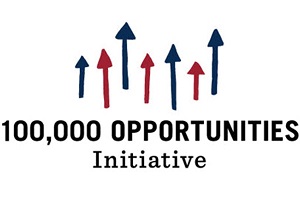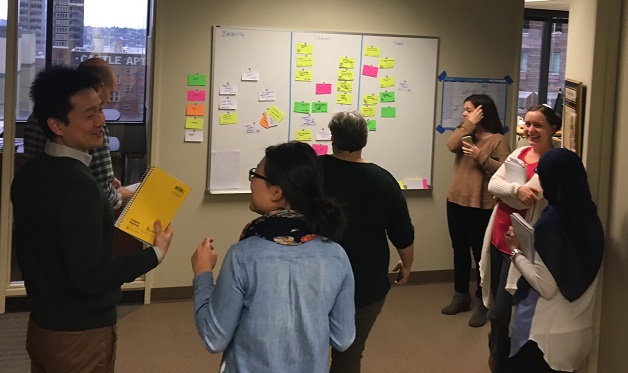Internal communications pose a significant challenge for organizations with growing teams, expanding services and complex collaborations. Philanthropy Northwest has all of the above, with the additional time zone quirks of our six-state membership network and national consulting team.
As part of my ongoing work to help improve Philanthropy Northwest's internal communications, I've been leading our staff through an experiment in Scrum, "a framework within which people can address complex adaptive problems, while productively and creatively delivering products of the highest possible value." Scrum is a way for cross-functional teams to get complex projects prioritized — and done. The key components are self-organized teams prioritizing work according to business value and using adaptive learning to get this work done in a way that optimizes business value, transparency and delivery.
I first learned about Scrum during my earlier career as a consultant in the tech industry, where it's a widely-used technique in software development, consulting and delivery. Its visual artifacts make the state of the work transparent across teams and builds accountability in the completion of the work. But I've long thought that Scrum has a lot to offer the nonprofit sector, too. The way this set of principles and practices understands business value — as value to the end-user or consumer — is directly applicable to mission-driven organizations. Scrum dictates that we constantly make sure our operational priorities are of the greatest service to those end-users; at Philanthropy Northwest, that includes our members, The Giving Practice's clients and the philanthropic sector.
 Scrum's focus on repeatable processes to deliver high-value results also makes it a great fit for mission-driven organizations, where teams need to constantly generate and reprioritize ideas as we learn more about their impacts on our communities. This attention to retuning alignment as a norm, rather than a failure of a top-down strategic process, maps closely to the realities of nonprofit work. Moreover, Scrum is a lean approach that imparts a disciple of limiting work in progress and focusing on maximizing throughput for efficiently getting work done. In the nonprofit experience, where the temptation to constantly throw new plates in the air, this external discipline can be a welcome antidote to overcommitment. Because of this, Scrum techniques can feel very liberating.
Scrum's focus on repeatable processes to deliver high-value results also makes it a great fit for mission-driven organizations, where teams need to constantly generate and reprioritize ideas as we learn more about their impacts on our communities. This attention to retuning alignment as a norm, rather than a failure of a top-down strategic process, maps closely to the realities of nonprofit work. Moreover, Scrum is a lean approach that imparts a disciple of limiting work in progress and focusing on maximizing throughput for efficiently getting work done. In the nonprofit experience, where the temptation to constantly throw new plates in the air, this external discipline can be a welcome antidote to overcommitment. Because of this, Scrum techniques can feel very liberating.
Our Scrum Lite Approach
We had two priorities for Philanthropy Northwest's Scrum experiment: making work more visible across our organization and spotting impediments quickly to prevent people from getting stuck. These priorities led us to try a simple time-boxed stand up meeting at a physical Scrumboard, where major pieces of work are represented via index cards (color coded by team) across three categories: "Work Backlog," "Works in Progress" and "Done."

Placed in a high-traffic area of our office, the board helps our staff quickly visualize what's moving and what's stalled. At our weekly stand-up meeting in front of the board, we each get a minute to talk about our work, especially where we are experiencing impediments and ask others for help. The follow-up coordination takes place organically after the stand-up meeting.
After six Scrum sessions, we already have a better sense of the varied work being done across the the organization, while gaining more awareness of the work our colleagues had incorrectly assumed was common knowledge. We've all gotten better at identifying why we have gotten bogged down in certain work — and at requesting help from each other.
What's Worked Well
- Getting a 360-degree view of the work our staff is working on both inside our office and beyond
- Getting on the same page and getting input and help from others
- Feeling the accountability to others at Philanthropy Northwest
- A more timely understanding of priorities
What Needs More Work
- Keeping our individual reports to 1 minute
- Figuring out how to report on long-term projects
What's Next
- Enforcing a 1 minute time limit on reports
- Keep our focus on what others need to see and call out where we are blocked on our projects
- Elevate where action is needed
- Asking for help, coordination and input from our colleagues
Has your organization adopted Scrum or any other agile framework to manage workload and provide visibility into the work across your organization? What's working for you?
Kelley Bevans is Philanthropy Northwest's information technology specialist. She can be reached at kbevans@philanthropynw.org.


